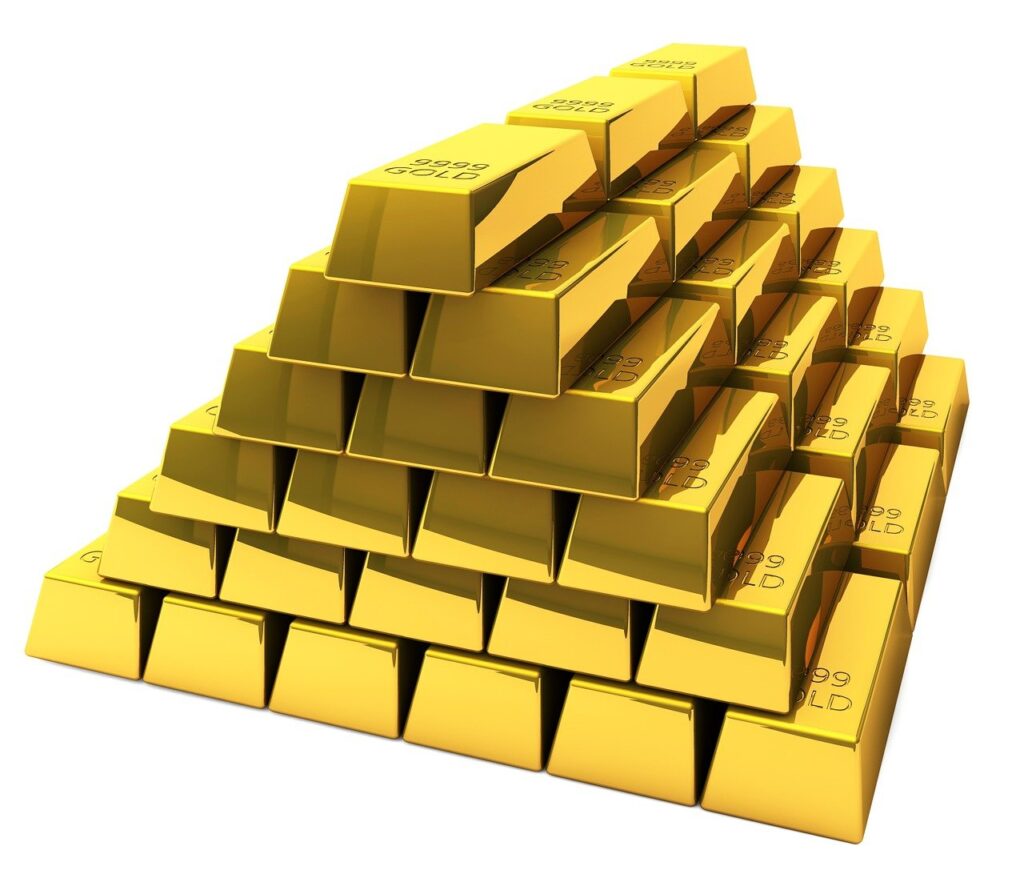
Gold: A Deep Historical Perspective
Gold has been at the heart of human civilization, shaping trade, power, finance, and technology. Its rarity, beauty, and resistance to corrosion have made it the ultimate symbol of wealth.
1. Gold in Prehistoric and Ancient Civilizations (Before 500 AD)
Early Human Use (Before 3000 BC)
- Gold’s Natural Appeal: Unlike other metals, gold is found in pure, metallic form in nature (as nuggets). Early humans probably collected gold from rivers.
- Oldest Known Gold Artifacts: Found in Bulgaria (Varna Necropolis, 4500 BC)—suggesting gold was already a sign of status.
- First Gold Jewelry: Evidence from Mesopotamia, Egypt, and the Indus Valley (3000 BC).
Egyptians: The First Gold Superpower (3000-1000 BC)
- Gold Mines of Nubia: Egyptians sourced gold from Nubia (modern Sudan), calling it “Nub” (origin of the word “Nubia”).
- Pharaoh’s Gold Monopolies: Only royalty and temples could own gold. It was considered the “flesh of the gods.”
- Pyramids & Tombs: The famous golden mask of Tutankhamun (1323 BC) shows how gold was reserved for divine figures.
The First Gold Currency (600 BC – 500 AD)
- Lydians (Turkey, 560 BC): King Croesus introduced the first standardized gold coins, marking a shift from barter to money.
- Persian Empire (500 BC): Darius I created the gold Daric, one of history’s most famous coins.
- Ancient Greece & Rome:
- Alexander the Great spread gold coinage across his empire.
- Rome’s Aureus became the gold standard for over 400 years.
Decline of Roman Gold (200-500 AD)
- As Rome weakened, gold reserves drained to the East (India & China) via trade.
- The Roman economy collapsed due to gold hoarding, inflation, and war.
2. The Medieval Gold Economy (500-1500 AD)
Byzantine Gold & Islamic Expansion (500-1100 AD)
- The Byzantine Solidus (gold coin) stabilized European trade.
- Islam’s expansion spread the gold Dinar, strengthening trade from Spain to India.
- West Africa (Mali & Ghana): Became a major gold supplier, trading gold for salt with North African merchants.
Gold & The Crusades (1100-1300 AD)
- Europeans rediscovered Islamic gold coins, boosting minting in Venice and Florence.
- Templars & Banking: Knights Templar pioneered gold-backed loans—a precursor to modern banking.
The Renaissance & Banking (1400-1600 AD)
- Italian banks (Medici, Fugger) dominated gold lending.
- Gold coins like the Florin and Ducat spread across Europe.
3. The Age of Exploration & Colonial Gold (1500-1800 AD)
Spanish Gold Rush (1500s)
- Conquest of the Aztecs (1519) and Incas (1532) flooded Europe with gold.
- This caused inflation (“Price Revolution”) and made Spain temporarily wealthy.
- African Gold Coast: Portugal and later Britain extracted gold from Ghana.
Global Gold Trade (1600-1700s)
- Dutch, British, and French empires fought for control over gold-rich colonies.
- South America (Brazil, Peru): Became leading gold producers.
4. The Gold Standard & The Industrial Age (1800-1900 AD)
Gold Rushes (1800s)
- California Gold Rush (1848-1855): Led to US westward expansion.
- Australia (1851): Brought wealth and immigration.
- South Africa (1886): The Witwatersrand fields made South Africa the world’s top gold producer.
Rise of the Gold Standard (1870s-1900s)
- UK (1816): First to officially tie currency to gold.
- US, Germany, France (1870s): Followed, creating a global gold-backed financial system.
- Gold-backed money stabilized economies but restricted growth (since money was limited to gold supply).
5. Gold in the 20th Century: Boom & Bust (1900-2000)
World Wars & Economic Turmoil (1900-1945)
- World War I (1914-1918):
- Countries abandoned the gold standard to finance war.
- Great Depression (1929):
- US citizens were forced to sell gold to the government (1933).
- Gold price was fixed at $35 per ounce (by FDR).
- World War II (1939-1945):
- US held most of the world’s gold reserves.
Bretton Woods & the End of the Gold Standard (1944-1971)
- 1944: The Bretton Woods system tied the US dollar to gold at $35/oz.
- 1971: Nixon ended the dollar-gold link (“Nixon Shock”), creating today’s fiat money system.
6. Gold in the 21st Century (2000-Present)
Gold as a Crisis Hedge
- 2008 Financial Crisis: Gold hit $1,920 per ounce as investors sought safety.
- COVID-19 (2020): Surpassed $2,000/oz due to global uncertainty.
Modern Gold Uses
- Technology: Used in electronics (smartphones, space tech).
- Medicine: Cancer treatments, dental work.
- Central Banks: Still hold gold as reserves (US, China, Russia).
Conclusion: Why Gold Matters
- Gold has been money for 6,000+ years.
- No other metal has influenced history as much.
- Even today, gold is a safe-haven asset in economic crises.
